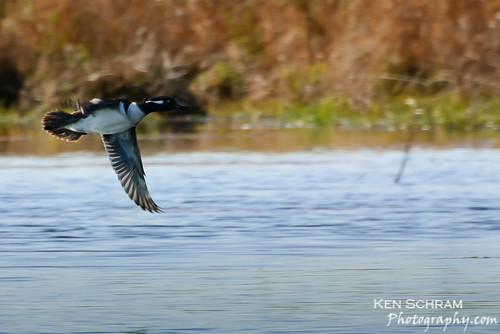Knowing Your Subject
While you might not consider the ducks that chase you around the park trying to steal your picnic lunch to be shy, their wild cousins will do their best to avoid you at all costs. Ever wonder why the duck hunter resorts to the use of a blind for concealment? It's because once you're spotted, the "jig is up" as they say as evidenced by this photo of a hooded merganser that had been coming in for a landing... until he saw me.
Left turn, Clyde! The day after, I stopped and bought a camo blind I can use the next time I head out to the marsh in hopes of capturing my ducky friends.
If you've followed my blog you've probably seen the posts on my osprey adventures. After several hours of observation, you start to pick up on certain behaviors that telegraph what's coming next. This can be critical in anticipating when to push that shutter release in order to get the shot you're after. When my osprey buddy stands up in the nest and starts stretching the wings, you know flight is imminent. When the female is standing on the edge of the nest looking to the west, odds are pretty darn good that the male is going to be flying in from that direction with dinner pretty soon.
When it comes to nature photography, knowing your subject is critical to your success. Take some time to read about their behaviors online, join Flickr groups and ask questions of those who's work you admire, and above all, spend time observing them when you can all the while doing your best not to disturb their daily lives. Remember, YOU'RE the visitor in their home.
Until next time, keep click'n.
-Ken

0 comments:
Post a Comment